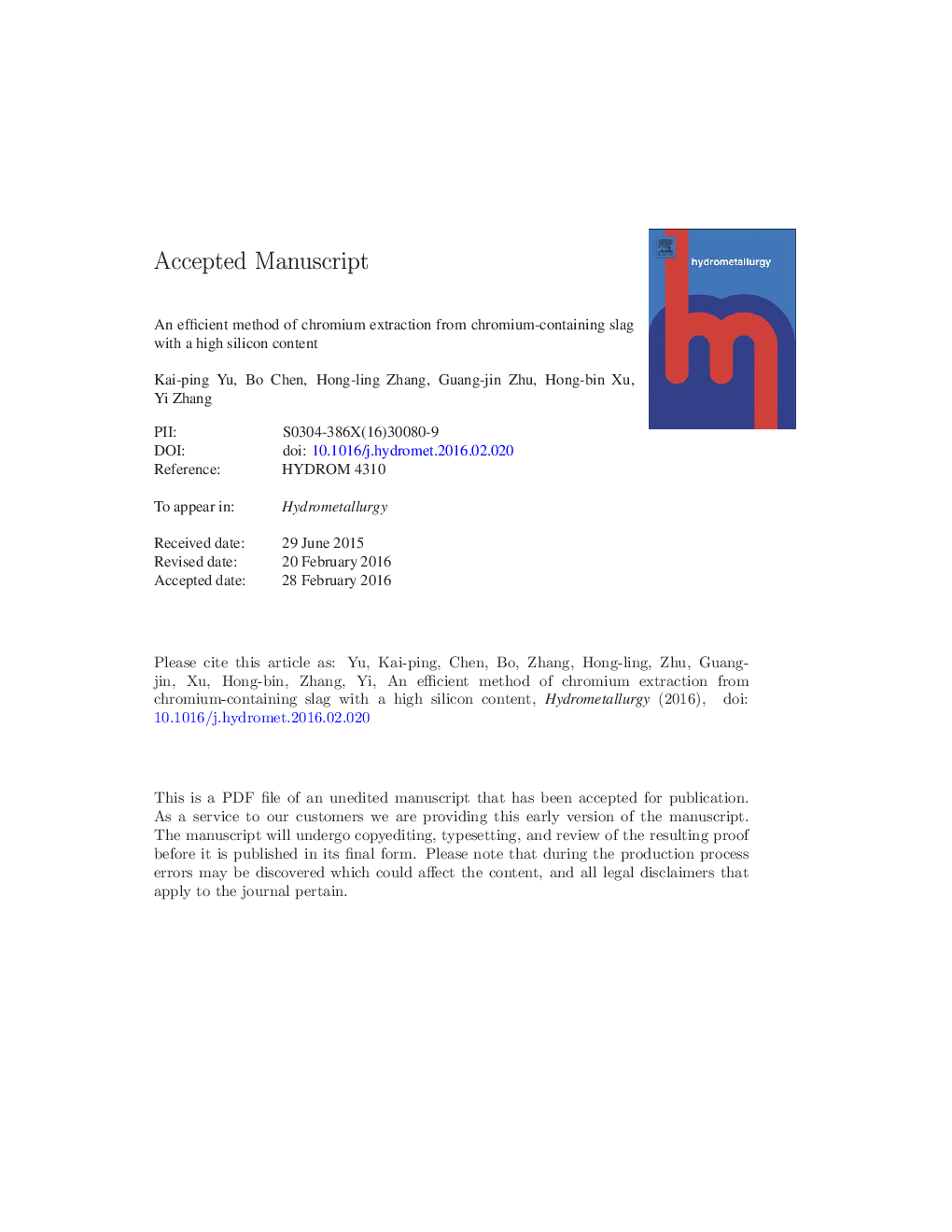| Article ID | Journal | Published Year | Pages | File Type |
|---|---|---|---|---|
| 6659243 | Hydrometallurgy | 2016 | 32 Pages |
Abstract
An efficient process was proposed for extracting chromium from chromium-containing slag after desilication with aqueous NaOH solution. The effect of the NaOH concentration, liquid-to-solid mass ratio, and leaching temperature on the leaching rate of silicon was investigated. The results showed that 83.78% of the silicon, 41.87% of the aluminum, and 46.42% of the vanadium were removed from the slag under suitable conditions. The kinetic analysis results showed that the leaching rate of silicon is controlled by a chemical reaction under two regimes due to the two silicon-bearing minerals presented in the slag. The first stage is limited by the reaction between NaOH and SiO2, whereas the second stage is subject to the reaction between NaOH and 2MgO·2Al2O3·5SiO2. The corresponding apparent activation energies were calculated to be 67.27 kJ/mol and 35.82 kJ/mol, respectively. The extraction rate of chromium from the leaching residue using lime-free roasting reached 98.41%, which was highly superior to the 9.85% obtained from the slag without desilication.
Keywords
Related Topics
Physical Sciences and Engineering
Chemical Engineering
Chemical Engineering (General)
Authors
Kai-ping Yu, Bo Chen, Hong-ling Zhang, Guang-jin Zhu, Hong-bin Xu, Yi Zhang,
